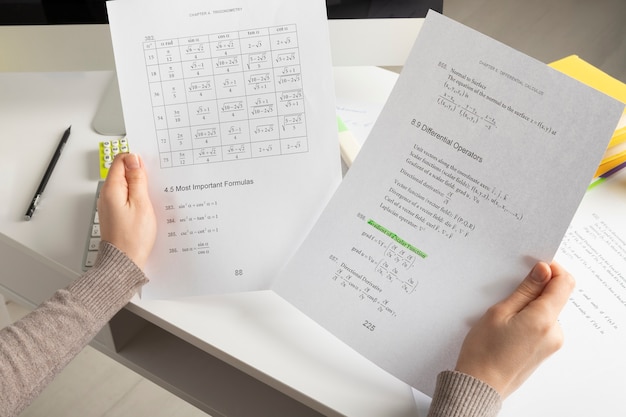
Pronouns: An Essential Guide
When it comes to language, pronouns play a crucial role. They are words used to substitute nouns, indicating the people or things involved in a conversation. Pronouns simplify communication by replacing repetitive nouns, making sentences more concise and efficient. Pronouns such as “I,” “you,” “he,” “she,” and “it” are fundamental in everyday language usage.
Types of Pronouns
Pronouns can be categorized into several types, each serving a distinct purpose in a sentence. Understanding these pronoun types is essential for effective communication. Let’s explore them in detail:
Personal Pronouns
Personal pronouns replace specific nouns that refer to people or things. They represent the speaker, the person being spoken to, or the person or object being talked about. Personal pronouns can be further divided into three categories: subjective, objective, and possessive.
Subjective Personal Pronouns
Subjective personal pronouns are used as the subject of a sentence. They include “I,” “you,” “he,” “she,” “it,” “we,” and “they.” These pronouns indicate who or what performs the action in a sentence, as shown in the table below:
| Subjective Personal Pronouns | Example Sentence |
|---|---|
| I | I love to read. |
| You | You are my best friend. |
| He | He is a talented musician. |
| She | She is studying medicine. |
| It | It is a beautiful day. |
| We | We enjoy hiking in the mountains. |
| They | They won the championship. |
Objective Personal Pronouns
Objective personal pronouns function as the object of a sentence. They are used when someone or something receives the action of a verb or when acting as the object of a preposition. The table below provides examples of objective personal pronouns:
| Objective Personal Pronouns | Example Sentence |
|---|---|
| Me | The teacher called me. |
| You | I saw you at the park. |
| Him | She invited him to the party. |
| Her | I gave her a present. |
| It | The cat chased a mouse, but it got away. |
| Us | They called us for an interview. |
| Them | I saw them at the concert. |
Possessive Personal Pronouns
Possessive personal pronouns indicate ownership or possession. They replace nouns to show that something belongs to someone. The following table illustrates examples of possessive personal pronouns:
| Possessive Personal Pronouns | Example Sentence |
|---|---|
| Mine | The car is mine. |
| Yours | Is this pen yours? |
| His | I borrowed his book. |
| Hers | The dress is hers. |
| Its | The dog wagged its tail. |
| Ours | The house is ours. |
| Theirs | I found a wallet, so I returned theirs. |
Relative Pronouns
Relative pronouns introduce relative clauses, which provide additional information about a noun or pronoun in the main clause. The most common relative pronouns are “who,” “whom,” “whose,” “which,” and “that.” These pronouns help connect ideas and make sentences more cohesive. Consider the following examples:
- The boy who won the race received a trophy.
- The company, whose CEO is retiring, will announce a successor soon.
- I bought a new laptop, which is incredibly fast.
- The book that I am reading is very interesting.
Reflexive Pronouns
Reflexive pronouns are used when the subject and the object in a sentence are the same. They emphasize the action performed by the subject. Reflexive pronouns include “myself,” “yourself,” “himself,” “herself,” “itself,” “ourselves,” “yourselves,” and “themselves.” Take a look at the examples below:
- I cut myself while cooking.
- Don’t blame yourself for the mistake.
- He hurt himself playing soccer.
- She taught herself to play the guitar.
- The cat licked itself.
- We congratulated ourselves for completing the project.
- You should be proud of yourselves.
- They prepared themselves for the upcoming exam.
Demonstrative Pronouns
Demonstrative pronouns point to specific people, places, or things. These pronouns include “this,” “that,” “these,” and “those.” They help distinguish between objects near or far from the speaker. Consider the following examples:
- I like this shirt.
- Take a look at that beautiful sunset.
- These flowers are for you.
- I prefer those shoes.
Interrogative Pronouns
Interrogative pronouns are used to ask questions. They include “who,” “whom,” “whose,” “which,” and “what.” Interrogative pronouns help gather information and seek clarification. Let’s explore the usage of these pronouns:
- Who is going to the party tonight?
- Whom did you invite to the wedding?
- Whose pen is this?
- Which book are you reading?
- What is your favorite color?
Indefinite Pronouns
Indefinite pronouns refer to non-specific people or things. They are often used when the exact identity or number is unknown or irrelevant. Some common indefinite pronouns include “anyone,” “someone,” “something,” “everyone,” “everything,” “no one,” “nothing,” “each,” “all,” and “both.” Here are some examples:
- Anyone can participate in the contest.
- Someone left their umbrella at the café.
- I heard something strange outside.
- Everyone enjoyed the party.
- Everything is going according to plan.
- No one knows the answer.
- I have nothing to do this weekend.
- Each student received a certificate.
- All of the apples were delicious.
- Both options have their advantages.
Conclusion
Pronouns are essential components of language that facilitate effective communication. They replace repetitive nouns and make sentences more concise and clear. Understanding the different types of pronouns, including personal, relative, reflexive, demonstrative, interrogative, and indefinite pronouns, enhances our ability to convey information accurately and efficiently.




